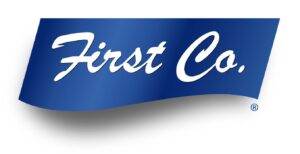Introduction
Older office buildings often struggle with HVAC inefficiencies that can lead to higher energy costs and reduced comfort for occupants. These inefficiencies usually stem from outdated systems and aging infrastructure that aren’t equipped to meet current energy demands. As a result, businesses may face uncomfortable work environments and increased operational expenses.
Improving HVAC efficiency in such buildings can transform them into more cost-effective and environmentally friendly spaces. With newer technologies and strategic upgrades, it’s possible to enhance performance and comfort. Retrofitting options and improved energy management practices offer valuable solutions for tackling these challenges head-on.
Efficient HVAC systems contribute to a healthier building environment and significant cost savings. Exploring how to upgrade components and optimize maintenance routines can lead to substantial improvements, making older buildings more sustainable and comfortable for everyone.
Identifying Common Efficiency Challenges in Older Buildings
Older office buildings often suffer from a range of HVAC inefficiencies that can impact both cost and comfort. One of the main issues is the age-related decline of HVAC systems. As systems age, they lose efficiency, leading to higher energy consumption and less effective heating or cooling. This can result in uncomfortable office temperatures and increased energy bills.
Several specific issues contribute to HVAC inefficiencies in older buildings:
1. Outdated Systems
Older HVAC systems may lack modern features and technological advancements that improve efficiency. These systems tend to operate less effectively compared to newer, more efficient models.
2. Poor Insulation
Many older buildings do not have adequate insulation, which results in significant energy loss. Poor insulation means heating and cooling efforts are less effective, requiring more energy to maintain desired temperatures.
3. Duct Leakage
Leaky ducts are common in aged buildings. As ductwork deteriorates, conditioned air escapes, leading to wasted energy and diminished system performance. This can drastically reduce the efficiency of HVAC systems, making it harder to heat or cool spaces effectively.
Recognizing these challenges is crucial for building managers and owners looking to improve efficiency. By identifying these problems, targeted solutions can be implemented to increase the efficiency and effectiveness of HVAC systems in older buildings.
Upgrading HVAC Components for Better Performance
Upgrading existing HVAC components offers a practical approach to boosting performance in older office buildings. Retrofitting systems with high-efficiency parts can significantly enhance overall function. Retrofitting involves replacing or adding components like energy-efficient compressors, fans, or heat exchangers to improve system output and decrease energy consumption.
Here are some key strategies for upgrading HVAC systems:
High-Efficiency Parts
Integrating newer parts with higher efficiency ratings can enhance the performance of existing systems. This includes replacing older motors and drives with more energy-efficient models.
Modern Thermostats and Controls
Installing smart thermostats can revolutionize system control. Modern thermostats offer precise temperature management and can be programmed to adjust settings based on occupancy, ensuring that energy is not wasted on empty spaces.
Smart Technology Integration
Incorporating smart technology into HVAC systems can greatly improve energy management. Smart systems can provide real-time data and analytics, allowing for better control and monitoring of system performance. This can help identify inefficiencies and optimize usage patterns.
By taking these steps, building managers can significantly improve the efficiency of their HVAC systems, lowering energy costs and creating a more comfortable environment for occupants.
Optimizing Maintenance Practices to Improve Efficiency
Proper maintenance practices are key to maximizing the efficiency of HVAC systems in older office buildings. Regular upkeep ensures systems run smoothly and effectively, preventing more costly repairs down the line. Here are essential maintenance tasks that can enhance system efficiency:
Filter Replacement
Changing filters regularly helps maintain airflow and keeps the system from overworking. Clogged filters reduce efficiency and can lead to system failures.
Duct Cleaning
Keeping ducts clean of dust and debris allows air to flow freely, improving system performance. It also enhances air quality for building occupants.
System Inspections
Conduct routine inspections to identify potential issues early. This includes checking electrical connections, inspecting belts and pulleys, and verifying refrigerant levels.
Regular cleaning and inspections play a vital role in maintaining system efficiency. These activities ensure all components are in good working order and reduce the chances of unexpected breakdowns. Predictive maintenance strategies take efficiency further by using data to anticipate when parts will need servicing, allowing for proactive repairs and minimizing downtime.
Implementing these practices helps keep older HVAC systems functioning at their best, extending their lifespan and ensuring optimal performance.
Enhancing Energy Management for Cost Savings
Effective energy management strategies can lead to significant cost savings in older office buildings. Tailored approaches can help reduce energy consumption and optimize system performance.
Energy Audits
Conducting energy audits identifies high-consumption areas within buildings. These audits provide insights into where energy use can be reduced, allowing for targeted improvements.
Energy-Saving Programs
Participating in energy-saving programs offers opportunities for incentives or rebates that can offset upgrade costs. These programs often include resources and support for implementing efficiency measures.
Resource Utilization
Utilize energy management systems that offer data analytics to monitor usage patterns. This information helps in setting benchmarks and improving energy efficiency strategies.
These strategies create a more efficient energy landscape within older buildings. They offer a pathway to reducing costs while improving the comfort and functionality of the workplace. By focusing on these areas, building managers can effectively manage energy and make the most of existing HVAC systems.
Conclusion
Enhancing HVAC efficiency in older office buildings requires a multi-faceted approach. Identifying inefficiencies and upgrading crucial components can vastly improve system performance.
Consistent maintenance ensures systems run optimally, and strategic energy management reduces costs. Combining these efforts leads to a more sustainable and comfortable environment for occupants.
Explore how First Co. can support your HVAC efficiency goals with tailored solutions for older buildings. Our expertise and American-made HVAC products in Dallas are designed to meet multi-occupant needs, providing the high performance and reliability your buildings deserve.

